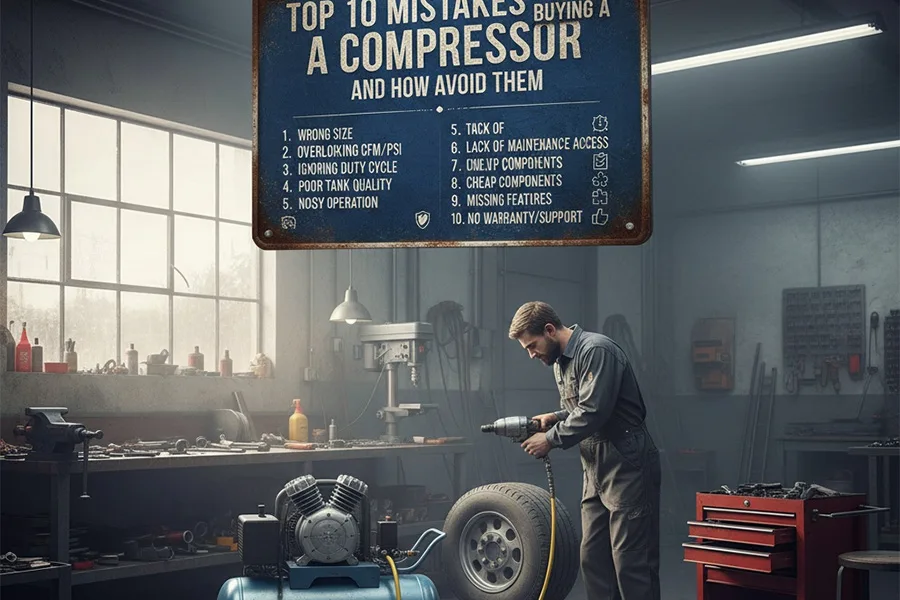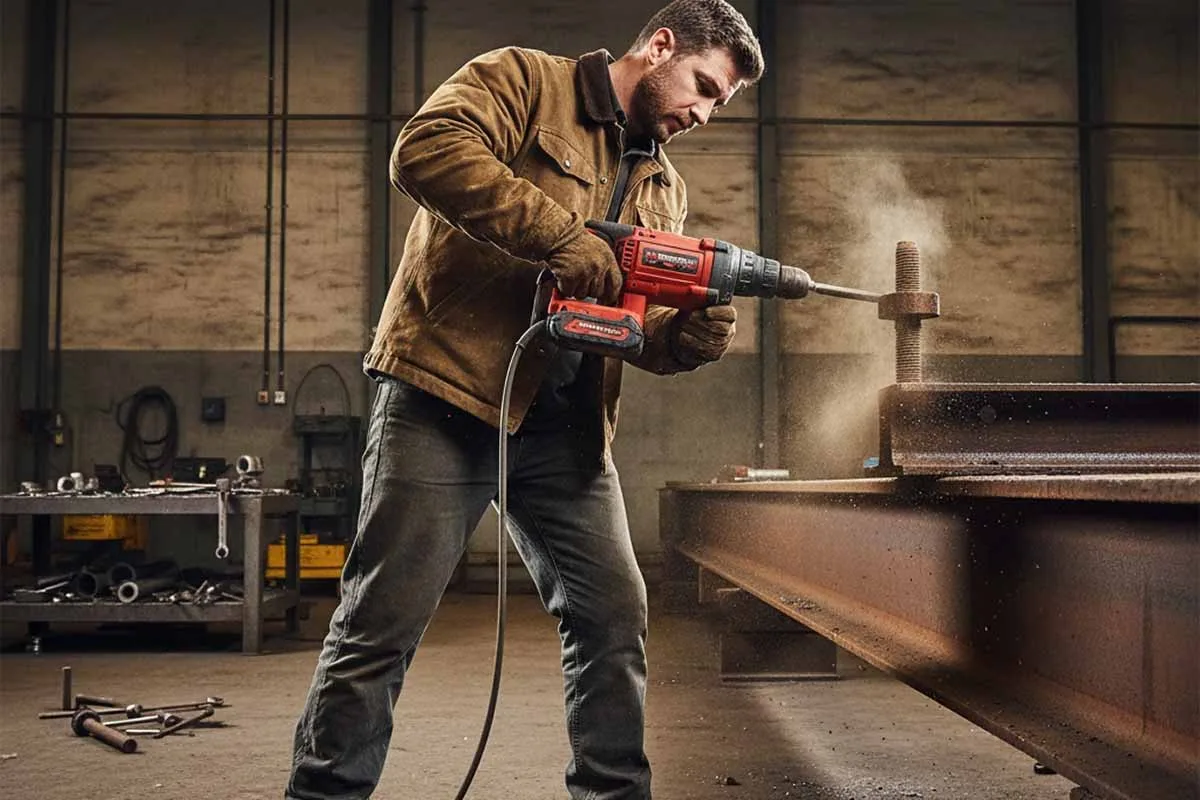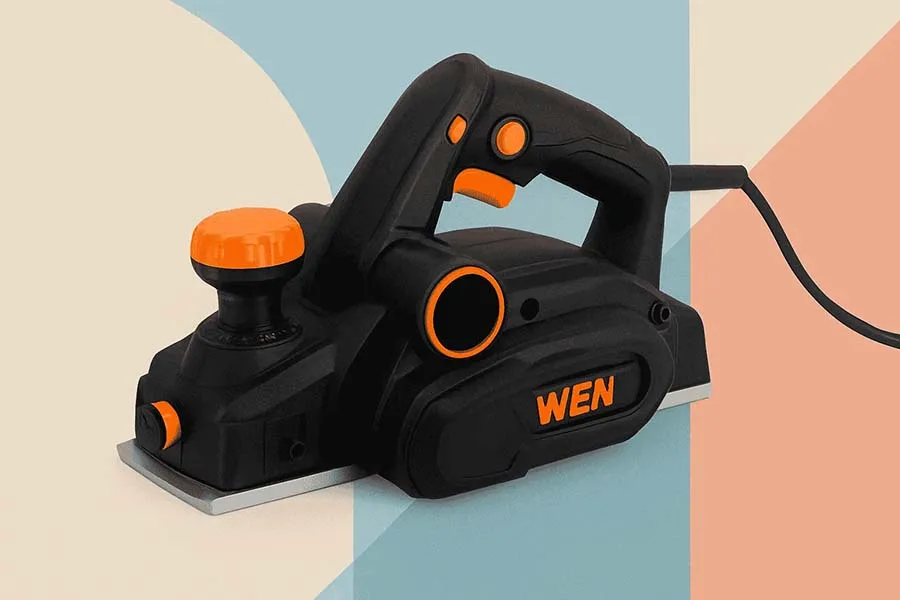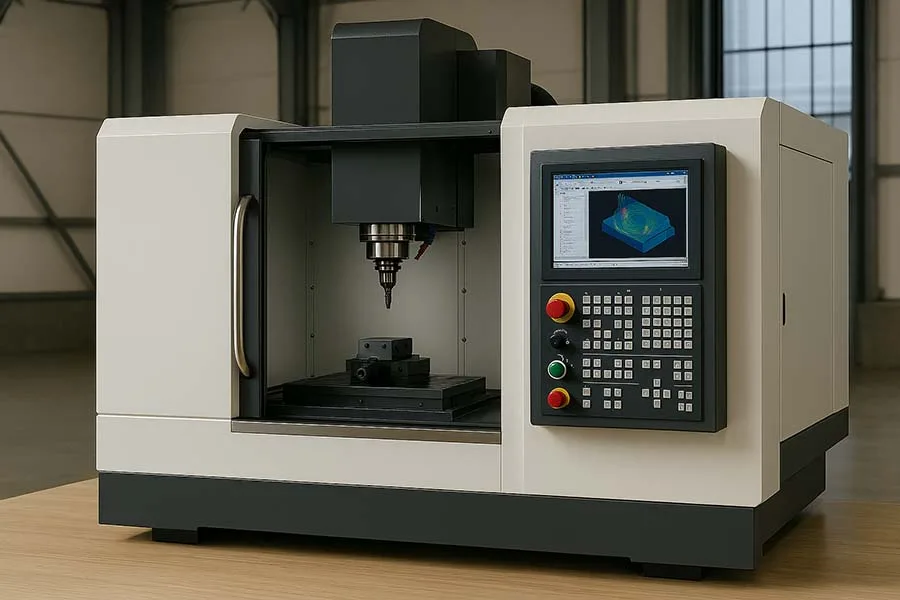Introduction: Why Choosing the Right Compressor Matters
A compressor isn’t just another workshop tool—it’s the powerhouse behind spray guns, impact wrenches, sandblasters, and countless other applications. The wrong choice can leave you with insufficient airflow, wasted money, and endless frustration. Choosing wisely, on the other hand, ensures efficiency, longevity, and consistent results.
Many buyers rush into a purchase without fully understanding what they need. That’s why we’ve created this guide: to help you avoid common mistakes, understand the specs that really matter, and confidently invest in the right compressor for your shop, garage, or job site.
Key Factors to Consider Before Buying a Compressor
Before diving into mistakes, let’s cover the essential factors every buyer should weigh:
- Airflow (CFM – Cubic Feet per Minute): Match the compressor’s airflow capacity with the demands of your tools. A nail gun requires far less airflow than a sandblaster.
- Tank Size: Larger tanks store more air, reducing motor cycles and keeping pressure steady. Choose based on how often and how long you use your tools.
- Pressure Rating (PSI): Check whether the compressor delivers the pressure your tools require. Most tools operate at 90 PSI, but some industrial-grade ones demand more.
- Power Source: Decide between electric or gas-powered compressors based on mobility, noise, and environment.
- Duty Cycle: Indicates how long the compressor can run before needing to rest. Continuous use requires a higher duty cycle.
- Noise Levels: A crucial factor if you’ll be using the compressor indoors or in residential areas.
- Price vs. Quality: Cheapest isn’t always best. Consider long-term reliability and maintenance costs.
Understanding Features and Specifications
Knowing the technical terms ensures you won’t get lost in product descriptions. Here are the must-know specs:
- CFM (Cubic Feet per Minute): Airflow output. Always check the tool’s requirements and add 25% buffer.
- Horsepower (HP): Don’t fall for inflated ratings; look for running HP rather than peak HP.
- Tank Orientation: Vertical tanks save floor space; horizontal tanks are more stable for mobile setups.
- Single-Stage vs. Two-Stage: Single-stage suits light to medium work, while two-stage is ideal for high-volume or industrial use.
- Oil vs. Oil-Free: Oil-lubricated compressors last longer but require maintenance; oil-free are lower maintenance but less durable.
- Portability: Wheels and handles matter if you’ll move it around often.
- Voltage Requirements: Ensure compatibility with your shop’s electrical setup.
Top 10 Mistakes When Buying a Compressor (and How to Avoid Them)
- Ignoring CFM Requirements
- Mistake: Buying a compressor too small for your tools.
- Fix: Always check tool manuals and ensure the compressor exceeds requirements.
- Focusing Only on Horsepower
- Mistake: Believing higher HP always means better performance.
- Fix: Prioritize CFM and PSI over horsepower.
- Underestimating Tank Size
- Mistake: Choosing a tank too small, leading to frequent cycling.
- Fix: Opt for at least a 20–30-gallon tank for versatile use.
- Overlooking Duty Cycle
- Mistake: Running a light-duty compressor continuously until it overheats.
- Fix: Check duty cycle ratings—50% is light duty, 100% is heavy-duty.
- Ignoring Noise Levels
- Mistake: Buying a loud compressor for a small shop or garage.
- Fix: Look for models under 70 dB if noise is a concern.
- Choosing Price Over Quality
- Mistake: Buying the cheapest option available.
- Fix: Balance cost with reliability, warranty, and parts availability.
- Not Considering Portability
- Mistake: Buying a bulky unit when mobility is required.
- Fix: Match the compressor to your work environment—stationary for shop, portable for on-site.
- Skipping Maintenance Requirements
- Mistake: Choosing an oil-lubricated compressor without planning for upkeep.
- Fix: Be realistic about your willingness to perform maintenance.
- Mismatching Power Supply
- Mistake: Buying a 240V compressor for a 120V garage outlet.
- Fix: Check your shop’s electrical setup before purchasing.
- Not Planning for Future Needs
- Mistake: Buying only for current tools, ignoring future upgrades.
- Fix: Choose a slightly larger capacity to accommodate future growth.
Recommended Top Picks
Here are some categories and trusted names to explore (not limited to one brand):
- Best for DIY/Home Use: Compact oil-free models from DeWalt, Makita, or California Air Tools.
- Best for Workshops: 20–30 gallon portable units from Husky, Craftsman, or Porter-Cable.
- Best for Industrial Applications: Two-stage heavy-duty models from Quincy, Ingersoll Rand, or Atlas Copco.
- Best Quiet Compressors: Low-noise units by California Air Tools or Rolair.
Top 10 Mistakes When Buying a Compressor FAQ
Interesting Fact
The very first mechanical air compressor dates back to 1500 BC, when blacksmiths used hand-operated bellows to pump air into furnaces.
Lesser-Known Fact
Compressors lose efficiency at higher altitudes because thinner air reduces intake density—something buyers in mountainous regions should consider.
Further Read
- Kaeser CSD Series Review: High-Efficiency Rotary Screw Compressors
- Kaeser M Series Review: Portable Rotary Screw Compressors for Mobile Power and Precision
- Kaeser Kompressoren SM Series Review
- Kaeser Compressor Buying Guide: How to Choose the Right Rotary Screw System for Your Operation
- How to Troubleshoot Common Compressor Problems
- How to Improve Energy Efficiency of Your Compressor
- Portable vs Stationary Compressor: Which One Should You Buy?
- Industrial Air Compressor Buying Guide
Conclusion: Buy Smart, Work Smarter
A compressor is more than just a purchase—it’s an investment in productivity, efficiency, and quality work. By avoiding the common mistakes above, understanding the specifications, and planning ahead, you’ll save money and enjoy years of reliable performance.
Now it’s your turn: Have you ever made a mistake when buying a compressor? Share your experience or tips in the comments below. And if you found this guide helpful, don’t forget to share it with friends and colleagues on social media!





